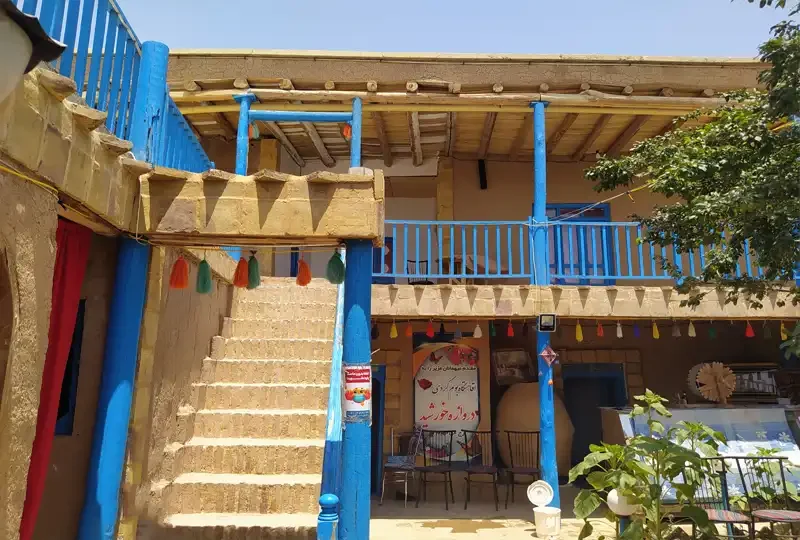What are the most famous dishes of Ahvaz?
I don’t know about you, but personally, I think the food of a region can be considered part of its tourist attractions. Ever since I was a child, during our family trips, I was always excited about the foods we were going to eat. I preferred them to be new dishes with flavors I hadn’t tasted before, so I could discover them, just like the tourist attractions of that city. Today, I want to talk to you a bit about the traditional foods of Ahvaz.
Ahvaz is the capital of Khuzestan province. Khuzestan is located in the southwest of Iran and has a hot and humid climate. Interestingly, Khuzestan is considered the oldest region of the Iranian plateau, with human habitation dating back to 2700 B.C. The warm-hearted people of this hot land have a variety of delicious foods. Join me in this section of the Gulf City Pedia tourism magazine as we get to know the most famous dishes of this region.
1- Ghalieh Mahi
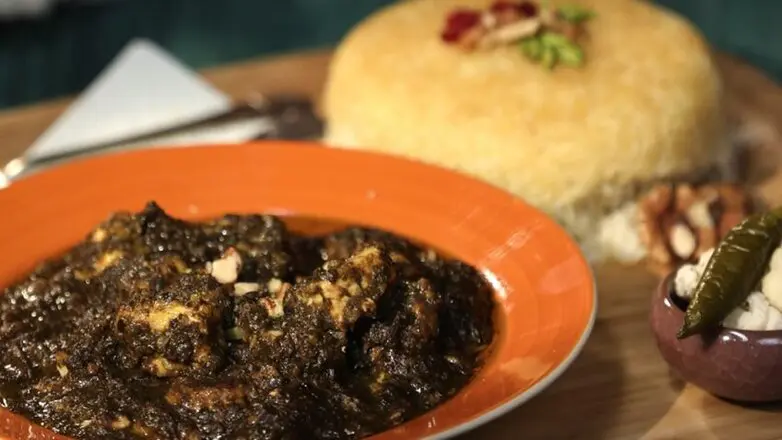
I bet you’re guessing that you’ll see the word “fish” quite a few times throughout this article. Well, you’re right! The first dish on this list starts with fish. Ghalieh Mahi is one of the most popular and traditional dishes of Ahvaz, usually made with types of fish like hamour, shir, sangsar, and others.
Other ingredients in this dish include tamarind, garlic, onion, tomato paste, spices, and fragrant herbs, especially fenugreek and coriander. To prepare this dish, you first need to soak the tamarind in water. Then sauté the pureed garlic and onion. Add the tomato paste and fragrant herbs, continuing to sauté.
Now, it’s time to add the tamarind water to the rest of the ingredients and season with your preferred spices. Separately, fry the fish pieces in another pan. Afterward, add the fish to the herb and spice sauce, and let it simmer on low heat until it thickens and everything comes together.
2- Emgesht

Emgesht is essentially a mixed rice dish. The ingredients of this traditional Ahvazi dish include fish, aromatic herbs like dill and coriander, raisins, garlic, onion, salt, turmeric, and, of course, special fish spices. Khuzestani Arabs usually make this dish with salted Ghubad fish, but you can prepare it with any other fish, preferably fresh.
To make this mixed rice, first boil the fish with water, turmeric, and spices for about 10 minutes, just enough to separate the fish meat from the bones without it falling apart. Once you’ve drained the fish, let it cool.
Then, separate the fish meat from the bones and sauté it with onion, garlic, spices, and raisins. Now it’s time to cook the rice. Let the rice cook until it’s almost done, but about 6-7 minutes before draining it, add the herbs to the boiling water. Then drain the rice.
After the rice cools a bit, layer it in a pot, adding the fish and raisin mixture between each layer. Let the rice and ingredients steam together. The name of this dish might be a bit tricky to pronounce, right? But I don’t think making it is too difficult. And even if it is, the delicious taste is totally worth the effort, in my opinion.
3- Nafeleh
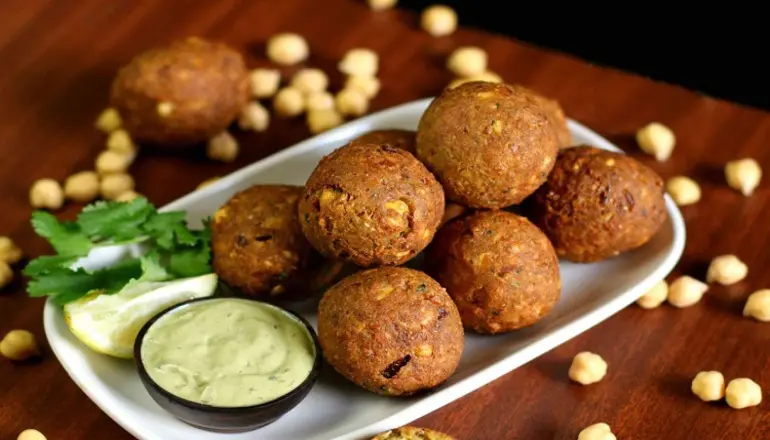
To make Nafeleh, you’ll need ground beef, chickpea flour, vinegar, sugar, dried mint, onion, and, of course, salt, pepper, and turmeric.
Start by grating the onion. Some prefer to squeeze out the onion juice, but with chickpea flour, this isn’t really necessary. Then add the ground beef, chickpea flour, and spices. Now, knead the mixture well for a few minutes. Take portions of the mixture the size of a walnut.
If you like, you can roll them into meatballs or flatten them with your hands. Personally, I prefer the meatball shape. Fry them until golden brown. Repeat this process with the rest of the mixture. Now it’s time to make the sauce in which these fried meatballs will cook.
For the sauce, finely chop an onion and sauté it with spices and dried mint. Then add water. Once the water starts to boil, it’s time to add the vinegar and sugar. After everything has boiled together for a few minutes, place the fried meatballs into the sauce. Let it simmer for about 20 to 30 minutes until the flavors meld together. You can serve Nafeleh with rice or bread and enjoy!
4- Grilled Saboor Fish

The ingredients of this delicious and traditional dish include saboor fish (it’s better to use the male fish, as the female has a bulging belly), rice herbs, coriander, fenugreek, onion, garlic, tomato paste, salt, pepper, and of course, tamarind water, a staple in southern Iranian cuisine.
Ahvazis begin by cleaning the inside of the fish and washing it thoroughly. They then open the belly of the fish completely and pour some tamarind water over it, allowing the fish to absorb it. Next, they mix garlic, onion, rice herbs, coriander, fenugreek, and a bit of thick tamarind.
In the next step, the remaining tamarind water, tomato paste, salt, and pepper are added to the herb mixture and rubbed onto the fish’s belly. The correct way to grill the fish is to place it with the belly facing upwards. You can grill it using a mesh rack or directly over charcoal. These days, with more people living in apartments, grilling it in the oven is also a good option.
5- Falafel
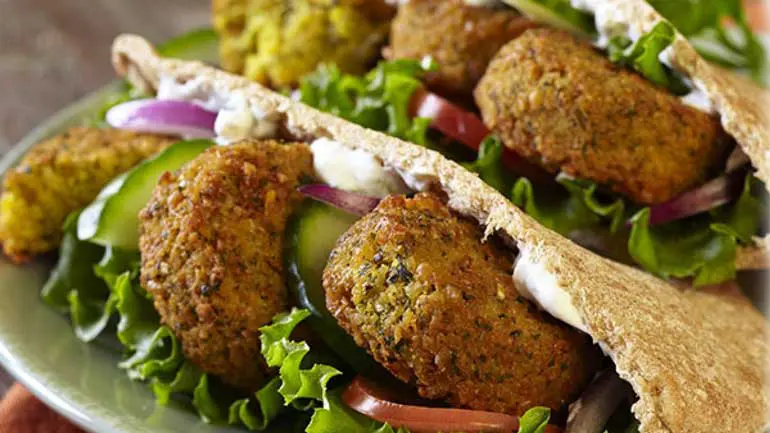
Among all Ahvazi dishes, you’ve probably heard of falafel, and perhaps even tried it many times. This simple, affordable, and low-calorie dish consists of chickpeas, potatoes, onions, coriander seeds, cumin powder, garlic, salt, pepper, and turmeric.
Making falafel isn’t too difficult, but you must soak the chickpeas beforehand. I recommend soaking them the night before. This improves the quality of the falafel and reduces the bloating effect of the chickpeas.
Next, mix all the ingredients (except the spices and lemon juice). For a smoother texture, you can put everything in a meat grinder or blender. The next step is to mix the blended ingredients with the spices and lemon juice. Knead the mixture well until it’s uniform.
Now, take small portions of the mixture and fry them in preheated oil. Make sure the falafel balls are fully submerged and fried thoroughly. If you prefer to use less oil, you can flatten the balls into patties before frying them, like cutlets.
Falafel is typically served as a sandwich with tomatoes and pickles. In my opinion, adding parsley and sliced onions to your sandwich makes it even better!
6- Samosa
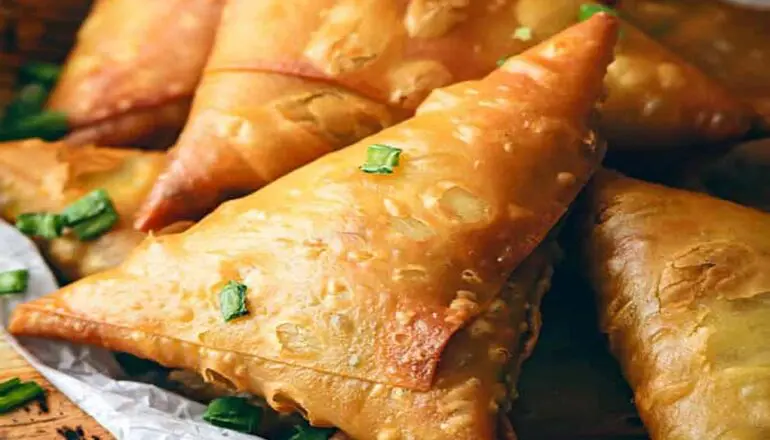
When writing this article, seeing the word “samosa” transported me back to my childhood. In those days, a small shop next to the main cinema in my beautiful city of Rasht sold incredibly delicious samosas, and we never went to the cinema without grabbing some before or after the movie! So, while samosas are originally from Ahvaz, many of us from different cities have fond memories of them.
Traditional Ahvazi samosas are made with potatoes, onions, lavash bread, parsley, salt, pepper, and turmeric. But if you like, you can add ground meat or sausages. I’ll be focusing on the traditional Ahvazi version here.
First, boil the potatoes. Then, sauté finely chopped onions with turmeric. Mash the boiled potatoes and mix them with the onions, parsley, and spices. At this point, it’s best to sauté the mixture briefly to enhance the flavor.
Now, it’s time to wrap the samosa filling in lavash bread. You probably remember that samosas are triangular in shape, so cut the lavash into long, wide strips. (Refer to the picture for better understanding.)

Once wrapped, fry the samosas in preheated oil. After frying, I suggest placing them on a paper towel to absorb the excess oil. This way, your clothes won’t get stained while eating!
7- Arabic Kubba

There are two ways to make Arabic Kubba. The first method uses rice or a mixture of rice and lentils. The second method involves using wheat bulgur. Other ingredients include ground meat, curry powder, salt, pepper, turmeric, and parsley. I’ll share both methods with you.
First Method (Rice and Lentil Mix)
Start by soaking the rice and lentils for about 2-3 hours (depending on the type of lentils you’re using). After soaking, cook them as you would for regular rice. Once they’re cooked, let them cool slightly (they shouldn’t be too hot or too cold) and then grind them together.
Second Method (Wheat Bulgur)
Soak the bulgur in warm water for 4-6 hours. Then, drain it and mash it thoroughly using a food processor or blender.
From this point, the cooking process is the same for both methods:
Sauté some onions. Then, add the ground meat and continue sautéing. Now, add the parsley and spices. Let the mixture cool slightly. Add the spices to the mashed rice and lentil mixture (or wheat bulgur).
For a more vibrant color, you can add a bit of saffron. Now, wet your hands slightly, take a portion of the rice-lentil (or bulgur) dough, flatten it in your palm, place some meat mixture in the center, then fold and seal it. Fry these stuffed dough balls in plenty of oil over medium heat until golden brown.
8- Hamis Tooleh
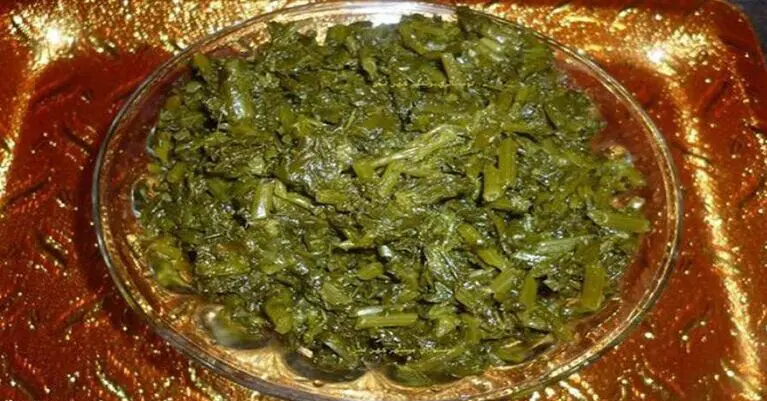
Tooleh is a local plant in Ahvaz, known for its medicinal properties. The locals use its leaves to make a dish called Hamis Tooleh. Other ingredients include onion, garlic, dried lime powder, pomegranate paste, salt, pepper, and turmeric.
To prepare Hamis Tooleh, first, separate the Tooleh leaves from the stems and wash them well. Then, cook the leaves with water, a little salt, and garlic. Once cooked, drain them. Next, sauté chopped garlic and onion. Add the cooked leaves to the garlic and onion mixture and continue sautéing. Finally, add the spices, pomegranate paste, and dried lime powder. After simmering for about 4-5 minutes, the dish is ready to serve. Enjoy!
9- Shrimp Qalieh
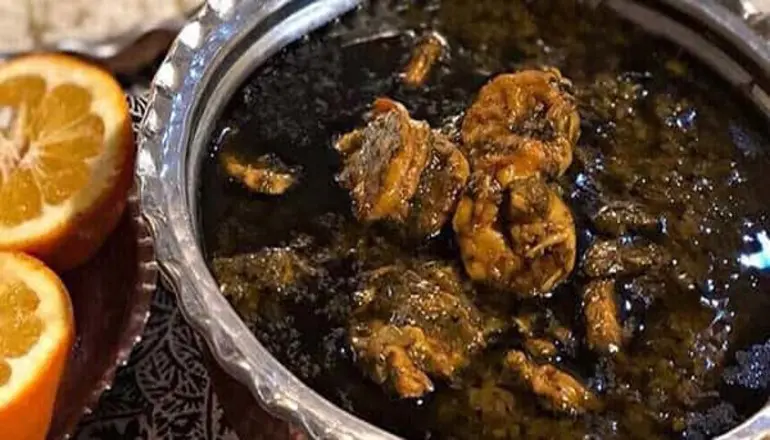
Do you remember when we talked about fish qalieh at the beginning of the article? Shrimp qalieh is quite similar, but instead of fish, shrimp is used. The other ingredients remain the same: coriander, fenugreek, tamarind, garlic, onion, and the usual Iranian spices, salt, pepper, and turmeric. Additionally, a small amount of flour is needed.
To prepare shrimp qalieh, start by cleaning the shrimp. Soak tamarind in a little warm water, mash it, and strain the extract. Mix the tamarind extract with two or three tablespoons of flour to thicken it. Sauté the onion, garlic, and herbs one by one, then add a little water and let it simmer.
Add the spices and tamarind extract to the herb mixture and let it simmer until it thickens. About 8 to 10 minutes before the dish is ready, add the shrimp and cook until done. If you wish, you can also add tomato paste to this stew.
10- Opoozi

Pronouncing this name, much like “Amgusht,” was a bit tricky for me until I realized “Opoozi” means “onion water” in a southern dialect! Interestingly, despite its name, this dish doesn’t contain much onion. It’s somewhat similar to the dish Eshkeneh. The ingredients include onions, turmeric, pomegranate paste, eggs, salt, pepper, and optionally, a few pomegranate seeds.
Start by slicing the onions and sautéing them with some turmeric. Add a bit of water and let it boil thoroughly. Now add the salt, pepper, and pomegranate paste. Lower the heat and add the eggs one by one. After a few minutes, you can also add some crumbled bread. Your Opoozi is ready and can be garnished with pomegranate seeds before serving.
11- Okra Stew
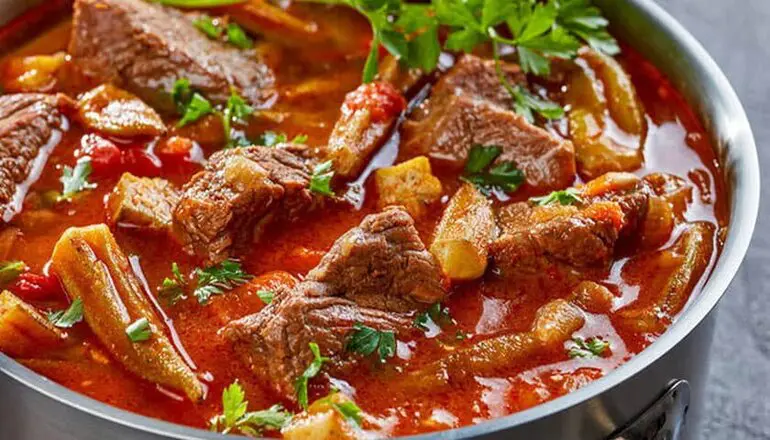
This stew is well-known throughout Iran and is a simple, delicious dish made with okra, lamb, grated tomatoes, tomato paste, garlic, onion, spicy green peppers, and spices such as salt, pepper, and turmeric.
The method of cooking okra stew is similar to other Iranian stews. First, sauté the garlic and onions, then add the diced lamb and continue sautéing. Add the spices, followed by the grated tomatoes. Once the water from the tomatoes evaporates, add the tomato paste.
At this point, add boiling water and allow everything to cook together. In the final step, add the okra and let the stew simmer until it thickens and everything is well-cooked. Your okra stew is now ready.
12- Hamisseh
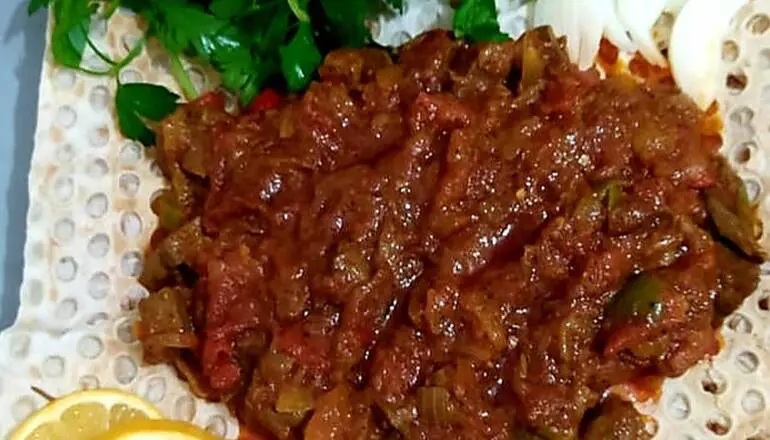
Hamisseh is a very simple and quick dish to make, and it closely resembles “Vavishka” from the northern regions of Iran. The ingredients needed for Hamisseh are beef heart and liver, tomatoes and tomato paste, onion, turmeric, salt, pepper, and curry powder.
As usual, begin by sautéing the onion, then add the liver and heart along with the spices. After sautéing everything together for a bit, add the tomato paste. Finally, add the tomatoes and allow the mixture to simmer until it thickens. This dish is typically served with bread.
13- Pakora (Pakoreh)
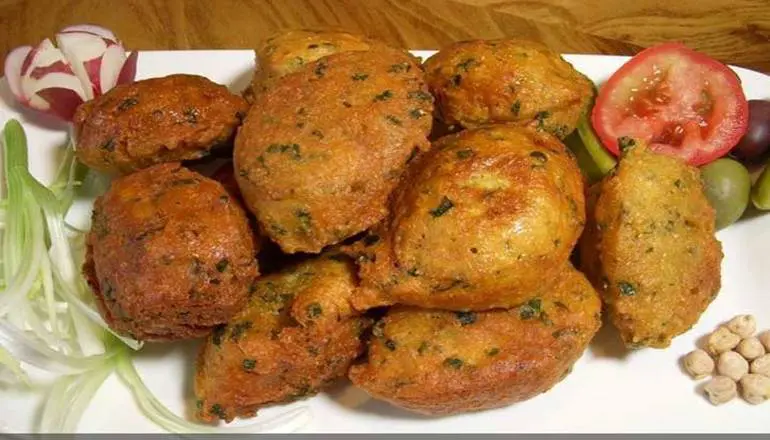
Pakora is originally an Indian dish, known for its spiciness, and is also popular among Arabs. If you’re a fan of spicy food, this dish is a must-try. The ingredients for Pakora are simple: wheat flour, chickpea flour, baking powder, water, chopped onions, spicy green peppers, coriander, leeks, salt, and turmeric.
To prepare Pakora, mix wheat flour, chickpea flour, water, baking powder, salt, and turmeric in a bowl. Then add the chopped onions, green peppers, coriander, and leeks. After thoroughly mixing the ingredients, form small balls (about the size of a walnut) and fry them in plenty of preheated oil until golden brown.
14- Ardeh Porridge (Ash Ardeh)

Despite its name, Ash Ardeh is not a soup but rather a mixed rice dish. In the old dialects of southern Iran, especially in places like Dezful, rice dishes were referred to as “Ash,” while soups were called “Sholeh.” Interestingly, this dish is commonly eaten by the people of Ahvaz and Dezful on rainy days.
One possible reason for this is that rice was historically a luxury, and ordinary people could only afford it about once a month. Since rain was considered a rare and blessed event in southern Iran, people would eat rice to celebrate. Another reason might be the warming effect of ardeh (tahini), which makes it comforting on cold, rainy days.
The ingredients for Ash Ardeh are rice, mung beans, ardeh (sesame paste), and date syrup (called “Siloon” locally).
To make Ash Ardeh, first cook the mung beans separately. Then cook the rice as if preparing to drain it. Ten minutes before draining the rice, add the cooked mung beans to the pot, then drain both together. At this stage, you’ll have a dish similar to Mung Bean Rice. Once the rice is steamed, spread it out on a tray and drizzle ardeh and siloon on top. Serve it with radishes.
15- Masva

Masva is a type of soup that closely resembles Ash Doogh (yogurt soup). The necessary ingredients include cooked chickpeas, bulgur wheat, chopped onions, kashk (fermented whey), spinach, mint, salt, pepper, and turmeric.
First, cook the bulgur wheat for about two hours. Then sauté the onions with turmeric. Add the sautéed onions, spinach, and cooked chickpeas to the bulgur. Let the mixture cook for about an hour. Finally, add the kashk and spices. If desired, you can also use beans, similar to Ash Reshteh, but make sure to soak them overnight.
16- Ash Ghalghal
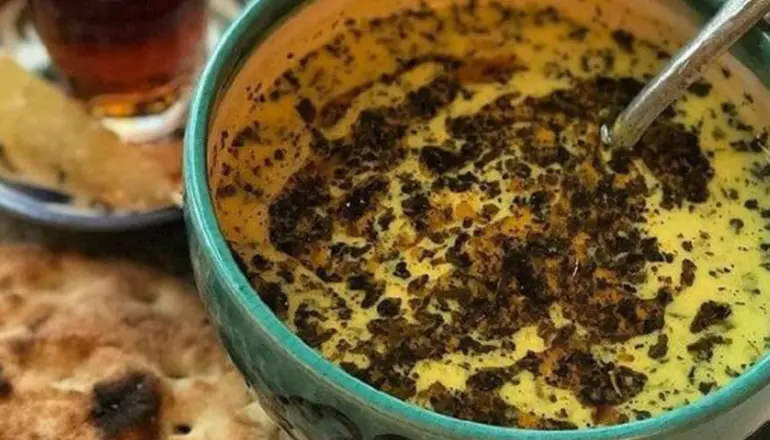
Ash Ghalghal is a delicious stew traditionally eaten during Iftar in the holy month of Ramadan. Unlike the mostly vegetarian dishes mentioned earlier, this stew contains beef (usually from the shoulder). The other ingredients include split fava beans, peeled wheat, rice, chickpeas, black-eyed peas, red beans, lentils, mint, sautéed garlic, and of course, salt, pepper, and turmeric.
To prepare Ash Ghalghal, first cook the rice and wheat thoroughly. Cook the beef as well, ideally with a raw onion for added flavor. Soak the legumes overnight, and then cook them in this order: first the chickpeas, then the black-eyed peas and red beans, and finally, the fava beans and lentils.
Once all the legumes are tender, add the cooked wheat and rice. Mash the ingredients slightly with a masher, then add shredded beef and the sautéed spices. Be sure to include the broth from the cooked beef, as it gives the stew a nice consistency. Your Ash Ghalghal is ready to be served.
17- Green Fava Bean Borani
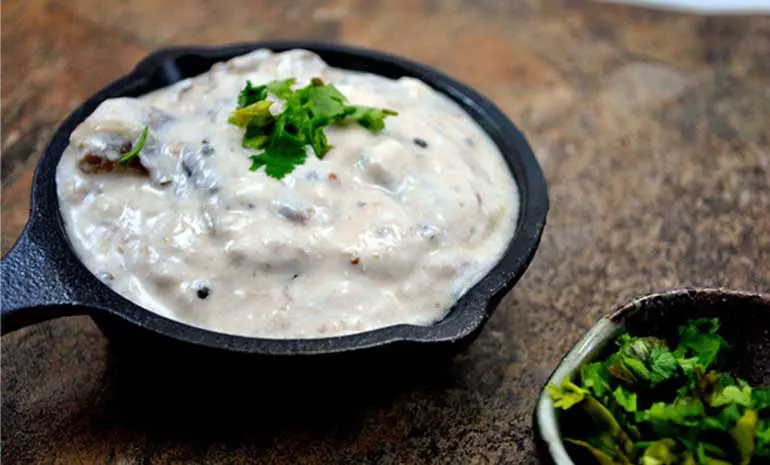
We northern Iranians are fond of Borani dishes and have countless varieties—eggplant borani, spinach borani, beet borani, and so on. The people of Ahvaz and Shushtar also have a delicious type of Borani made with green fava beans. It’s quite hearty for a Borani. The ingredients needed are fresh fava beans (both skins removed), rich yogurt (slightly runny is better), sautéed onions, sautéed garlic, dried lime powder, dill, turmeric, salt, and pepper.
First, cook the fava beans, making sure not to cover the pot to preserve their green color. Once the beans are cooked, mix them with the other ingredients. Your simple and delicious Borani is now ready to enjoy!
18.Egg Stew
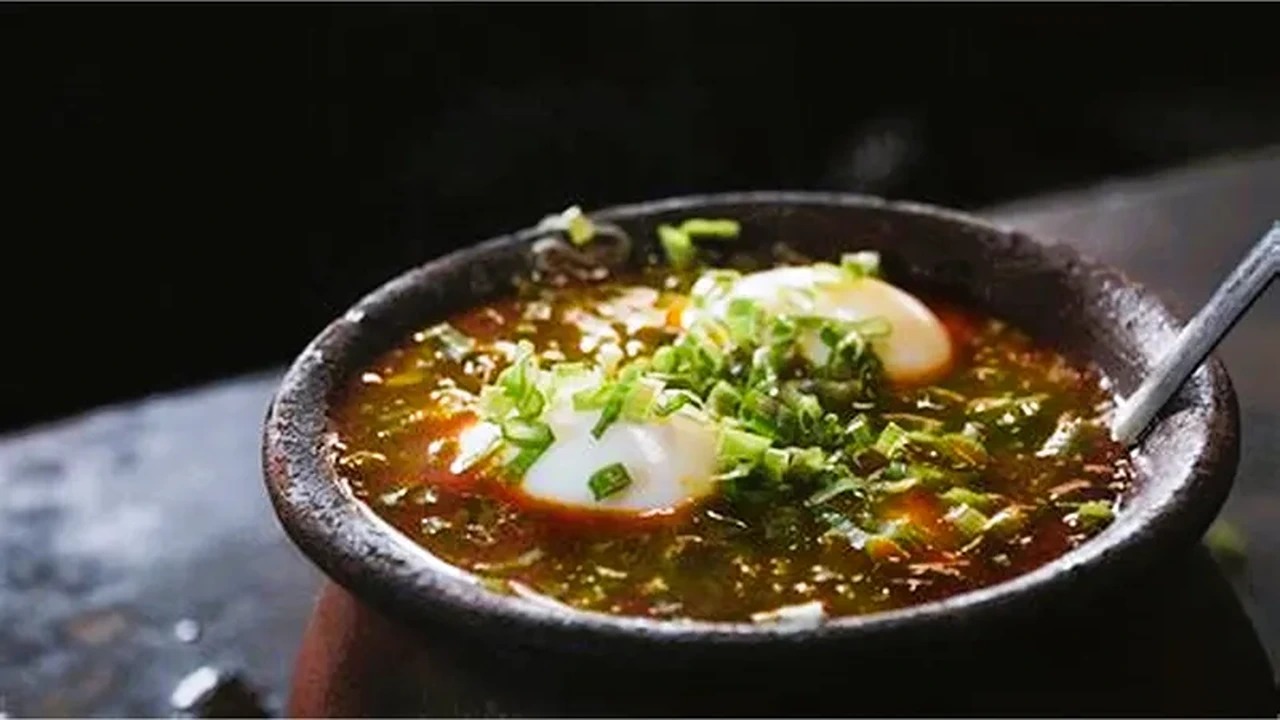
Egg Stew (Ghaliyah) or Egg Stew is one of the traditional dishes of Ahvaz and Khuzestan province, known for its unique taste. If you’re craving a simple and delicious meal, Egg Stew is the perfect choice for you. This authentic dish can be found in traditional restaurants in Ahvaz. The dish is prepared using aromatic herbs, garlic, and onions. By adding eggs and a little tomato paste, the Egg Stew is ready in no time. Now, enjoy its delightful and distinct flavor.
Traditional Desserts of Ahvaz
No matter where you are in the world, enjoying a sweet dessert after a main meal is always delightful. The warm-hearted people of Ahvaz have their own special desserts. Here, we’ll learn about a few of them.
1- Ranginak
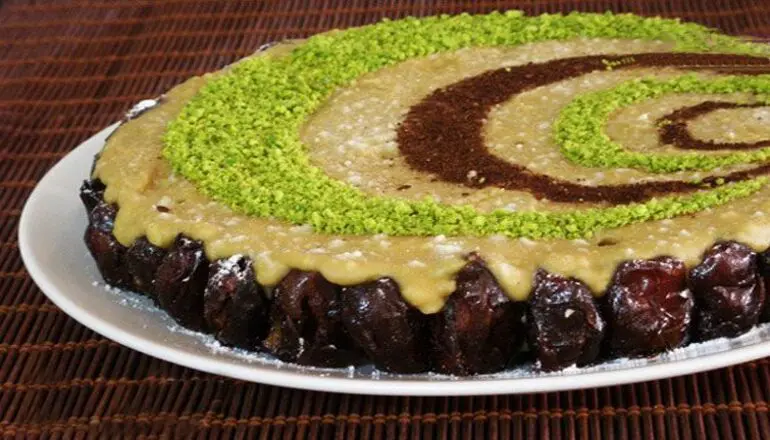
This southern dessert is made with dates, making it both delicious and nutritious. The ingredients you’ll need for Ranginak are: sifted flour, butter, cinnamon powder, cardamom powder, walnut halves, dates, and pistachio powder for garnish.
First, take the butter out of the fridge and let it come to room temperature. Melt the butter in a pan and add the flour, stirring it until golden and the raw taste is gone. Then, add the cinnamon and cardamom powder, continuing to stir for another two to three minutes. Be patient while cooking the flour and avoid turning the heat too high. Next, carefully remove the pits from the dates and fill them with walnut halves. Pour the flour and butter mixture over the dates and spread it evenly. Place the Ranginak in the fridge for two to three hours until it sets and is ready to be cut into pieces. You can garnish with pistachio powder for a final touch.
2- Muhallabia
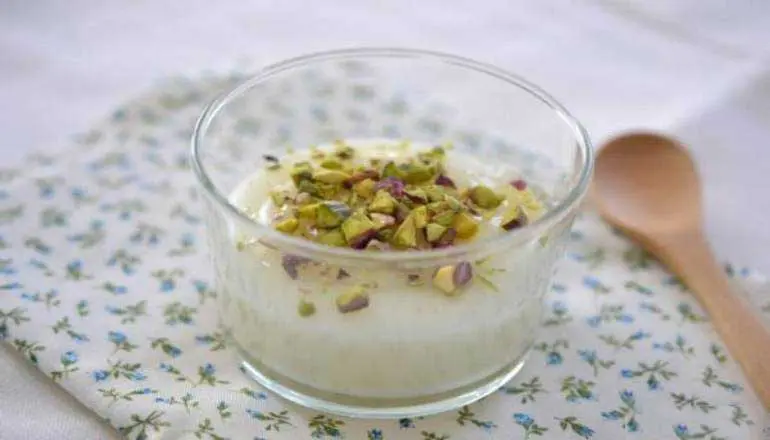
This dessert, which has roots in Arabic and Turkish cuisine, is quite similar to our own Firni or pudding. The ingredients for this dessert are cornflour, milk, sugar, cream, rosewater, and pistachio powder (optional).
First, mix the milk, sugar, and cornflour in a pot. Place the pot over medium heat and stir continuously until the mixture becomes smooth and thick, similar to the consistency of Firni. Once it reaches the right thickness, remove it from the heat and stir in the cream and rosewater. Transfer the Muhallabia to your desired serving dish. It can be served either warm or cold, just like Firni.
3- Moasel
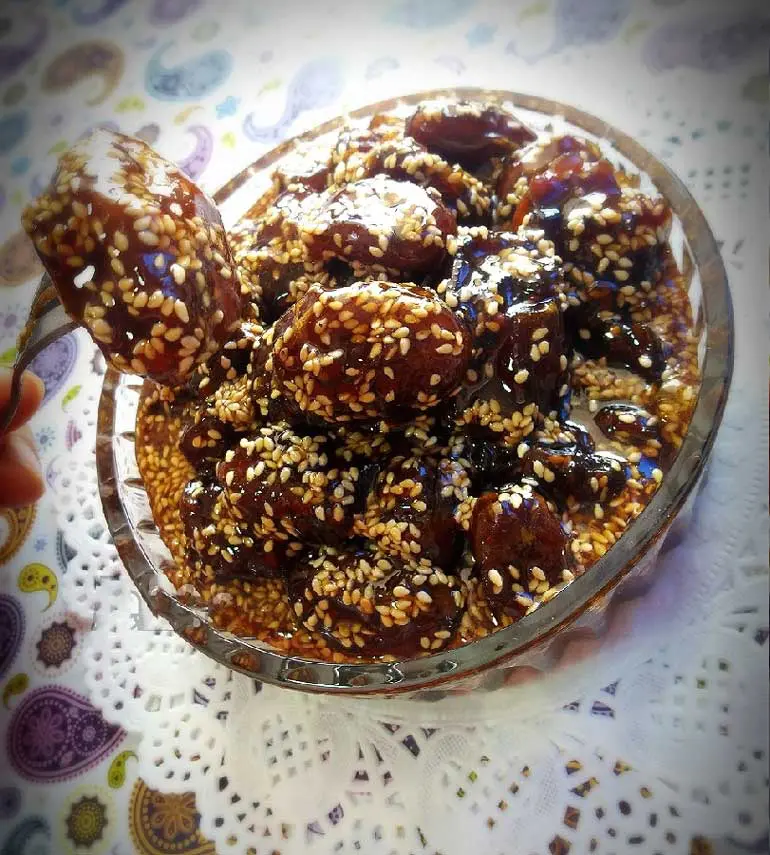
This is perhaps the easiest dessert I’ve ever come across. Making it is super simple. All you need are dates, date syrup (called “Siloon”), sesame seeds, black pepper, cinnamon, ginger, cardamom, and cloves. First, toast the sesame seeds, then add all the spices. After that, pour in the date syrup. Cook for another two to three minutes before turning off the heat. Spread the mixture over the dates. Your Moaasel is ready! Just make sure to store it in an airtight container.
I hope you found this article useful, and that, like me, you now know more about the traditional cuisine of Ahvaz, in the southern region of Iran. My suggestion is to try one of these simple yet delicious dishes or desserts as soon as you get the chance. As you can see, Ahvazi food is mostly affordable and easy to make, perfect for hosting guests or even for a regular day after work. Stay tuned for more interesting topics in future articles!


